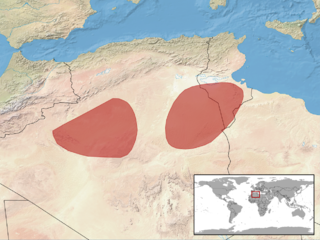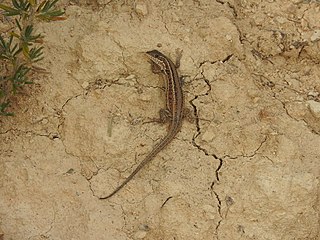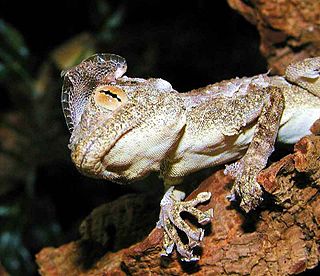
The Sinai agama is an agamid lizard found in arid areas of southeastern Libya, eastern Egypt, Israel, Jordan, Syria, Saudi Arabia, the United Arab Emirates, Oman, eastern Sudan, Ethiopia, Eritrea, and Djibouti.

Trapelus is a genus of Middle Eastern agamid lizards, which contains 13 species.

Laudakia stellio is a species of agamid lizard. also known as the starred agama or the roughtail rock agama.
The wedge-snouted skink is a common and widespread species of skink in the family Scincidae. It is found in Egypt, Israel, Jordan, Libya, and the Palestinian territories. Its natural habitats are subtropical or tropical dry shrubland, subtropical or tropical dry lowland grassland, freshwater springs, hot deserts, and sandy shores. S. sepsoides is a viviparous species, and it is nocturnal during the summer and diurnal during the winter.

Wright's skink, also known commonly as Wright's mabuya, is a species of lizard in the family Scincidae. The species is endemic to Seychelles. There are two recognized subspecies.

The erg agama, also commonly known as the Sahara agama, is a species of lizard in the family Agamidae. The species is endemic to North Africa.
Hemidactylus foudaii is a species of gekko in the family Gekkonidae. The species is endemic to North Africa.

Phelsuma sundbergi, commonly called the La Digue day gecko, Mahé day gecko, or Seychelles giant day gecko, is a species of lizard in the family Gekkonidae. The species is endemic to Seychelles and has three subspecies.
The Qattara gecko is a species of lizard in the family Phyllodactylidae.

Acanthodactylus maculatus, known commonly as the spotted fringe-fingered lizard and the spotted fringe-toed lizard, is a species of lizard in the family Lacertidae. The species is endemic to north-western Africa.
The leopard fringe-fingered lizard, also known commonly as the Egyptian fringe-fingered lizard, is a species of lizard in the family Lacertidae. The species is endemic to North Africa.

Ophisops occidentalis, the western snake-eyed lizard is a species of lizard in the family Lacertidae. It is found in Algeria, Egypt, Libya, Morocco, and Tunisia. Its natural habitats are temperate forest, Mediterranean-type shrubby vegetation, subtropical or tropical dry lowland grassland, and rocky areas. It is threatened by habitat loss.
Philochortus zolii is a species of lizard in the family Lacertidae. The species is native to northern Africa.

Macroprotodon cucullatus, commonly known as the false smooth snake, is a species of mildly venomous colubrid snake endemic to the Mediterranean Basin.
Telescopus hoogstraali, common names of which include Hoogstraal's cat snake and the Sinai cat snake, is an endangered cat snake species of the family Colubridae. The species is endemic to the Middle East.

Uromastyx aegyptia is a species of lizard in the family Agamidae. The species is endemic to North Africa and the Middle East.

Ptyodactylus hasselquistii, commonly known as the fan-footed gecko, Hasselquist's fan-footed gecko, and the yellow fan-fingered gecko, is a species of gecko, a lizard in the family Phyllodactylidae. The species is endemic to northern Africa and western Asia.
Mesalina pasteuri, also known commonly as Pasteur's lizard, is a species of sand-dwelling lizard in the family Lacertidae. The species is endemic to North Africa.

Acanthocercus adramitanus, also known commonly as Anderson's rock agama or the Hadramaut agama, is a small species of lizard in the family Agamidae. The species is endemic to the Arabian Peninsula.














